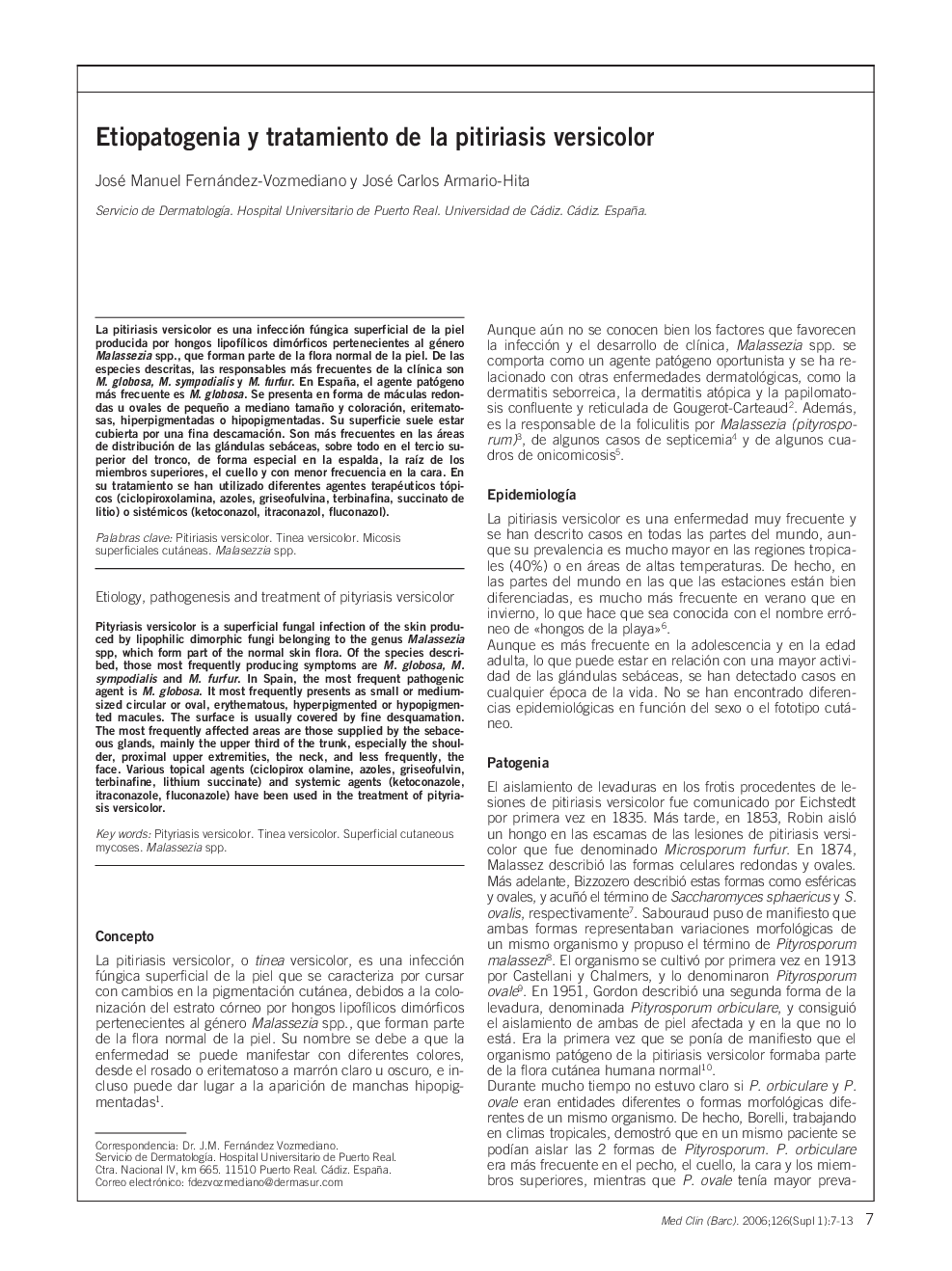| Article ID | Journal | Published Year | Pages | File Type |
|---|---|---|---|---|
| 3800604 | Medicina Clínica | 2006 | 7 Pages |
Abstract
Pityriasis versicolor is a superficial fungal infection of the skin produced by lipophilic dimorphic fungi belonging to the genus Malassezia spp, which form part of the normal skin flora. Of the species described, those most frequently producing symptoms are M. globosa, M. sympodialis and M. furfur. In Spain, the most frequent pathogenic agent is M. globosa. It most frequently presents as small or mediumsized circular or oval, erythematous, hyperpigmented or hypopigmented macules. The surface is usually covered by fine desquamation. The most frequently affected areas are those supplied by the sebaceous glands, mainly the upper third of the trunk, especially the shoulder, proximal upper extremities, the neck, and less frequently, the face. Various topical agents (ciclopirox olamine, azoles, griseofulvin, terbinafine, lithium succinate) and systemic agents (ketoconazole, itraconazole, fluconazole) have been used in the treatment of pityriasis versicolor.
Related Topics
Health Sciences
Medicine and Dentistry
Medicine and Dentistry (General)
Authors
José Manuel Fernández-Vozmediano, José Carlos Armario-Hita,
